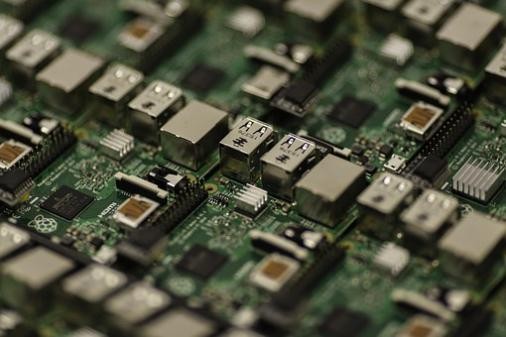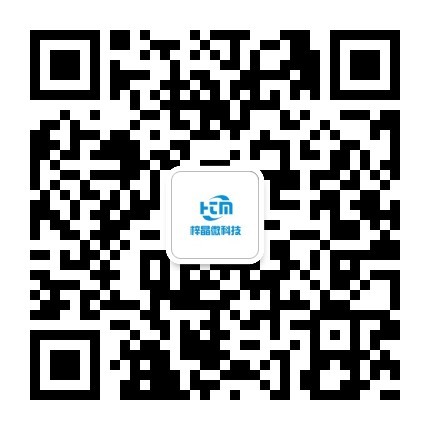Talking about "core": Observation on top 20 distribution of semiconductor enterprises
Semiconductor is an important part of the electronic component industry. Its products can be used in communication, computer, mobile phone, automobile, industry, medical treatment, military and other fields. In the era of emphasizing "Networking" and "intelligence", semiconductor products have been widely used in all aspects of life and are one of the supporting forces in the era of intelligence. However, this is also an industry with very high technical barriers. Those who can "rank first" in this field are those who have experienced a lot in the market and have accumulated profound experience. This is also reflected in the ranking of the top 20 semiconductor manufacturers in the world in 2016 released by IC insights.
Most of the enterprises listed in the list released by IC insights are the United States, Europe, South Korea, Japan, Taiwan and other places. These places have long paid attention to the development of the semiconductor industry. After years of accumulation, they have strong strength in talent and technology. The list shows that eight of the listed enterprises are from the United States, namely Intel, Qualcomm, micron, Texas Instruments, apple, NVIDIA, Grosvenor and Anson; Three are from Europe, including NXP, Infineon and STMicroelectronics; Three are from Japan, namely Toshiba, Sony and Rissa; The three companies from Taiwan are TSMC, MediaTek and UMC; Two are from South Korea, namely Samsung and SK Hynix; One is from Singapore, which is the new Broadcom formed after anhuagao acquired Broadcom.

U.S.A
The United States, which has eight enterprises on the top 20 list, has a profound accumulation in semiconductor and is hard to meet its rivals. The listed enterprises are also good at different fields. Therefore, it can be seen that it is no accident that this birthplace of semiconductor chips can always maintain its leading position.
Intel is an enterprise founded in 1968, occupying the top position among chip manufacturers in the PC and server fields. Intel, which failed to replicate the glory of PC chip in the mobile chip field, has been busy in the layout before the next technology wave in recent years. According to earlier reports, Intel will focus on eight fields in China, including artificial intelligence, unmanned driving, 5g, virtual reality, sports, robotics, precision medicine and made in China 2025.
Qualcomm became famous after the popularity of smartphones, and almost contracted the chips used in Android flagship phones. However, after smartphones fell into homogeneity and slow growth, Qualcomm actively expanded to various emerging fields. While consolidating its position in the mobile phone market, the company will expand its core technology to the Internet of things, mobile computing, Internet of vehicles and other fields, and the vertical field of data center and some Internet of things will also be the focus of its investment. For the hot artificial intelligence field, Qualcomm acquired scyfer, a Dutch machine learning startup, and said that it had already started basic research.
Micron's strength lies in the field of memory chips, and it is one of the leading enterprises in the fields of DRAM and NAND flash. It was reported that Ziguang group had made a takeover offer to it, but micron did not accept it because it considered that the US regulatory authorities might prevent it. In the past two years, micron, which has not been acquired by Ziguang, took the initiative to acquire huayake, a large DRAM manufacturer in Taiwan. As for this wave of memory, the price has risen all the way because of the shortage of supply, micron chose to expand its production in Taiwan.
Ti is not only the top 20 semiconductor manufacturer, but also the world's first industrial semiconductor manufacturer. In addition to its semiconductor business, Ti also provides sensing and control, educational products and digital light source processing solutions. However, in the past two years, this enterprise has not made any acquisition under the situation of crazy integration in the semiconductor field. Until this year, it was rumored that it would acquire AMD. However, up to now, there is no clear follow-up development of this matter.
Apple is most famous for its iPhone, iPad and other products, but its self-developed A-Series chips are not as good as Qualcomm's in the field of mobile phone chips, and they have repeatedly outperformed Qualcomm's snapdragon series chips in the score ranking. In addition, it is rumored that the company is actively promoting the research and development of GPU, power IC, baseband and and other chips.
NVIDIA was famous for its graphics card in the past, but now it is self-defined as an artificial intelligence computing company. However, it is related to the GPU it designed. GPU is one of the most recognized artificial intelligence chip types at present, which can handle large-scale parallel computing. NVIDIA, which saw the potential of artificial intelligence early, has also successfully established its position in the field of AI chips, and its market value has increased significantly in the past few years.
Grofand is a spin off of AMD manufacturing department and is the second largest pure wafer OEM enterprise. When Intel, TSMC, Samsung and other enterprises carry out process development in the order of 10nm and 7Nm, Grosvenor chooses to directly carry out research and development of 7Nm and plans to enter mass production in 2018. In addition, Grosvenor and Chengdu have cooperated to build a 12 inch wafer manufacturing base in Chengdu. The first phase of the base is to build a 12 inch production line of mainstream CMOS process with 0.18um/0.13um process, and the second phase is to build a 12 inch production line with 22fdx 22nm fd-soi process.
On semiconductor was separated from Motorola in 1999 and ranked 9th among the top ten industrial semiconductor enterprises in 2016. The company can provide the following semiconductor based solutions: energy-efficient power management, simulation, sensors, logic, timing, interconnection, discrete, system single chip and customized devices. In 2015, the company successfully acquired Xiantong semiconductor with us $2.4 billion, which invented the integrated circuit.
Europe
Among the top 20 semiconductor enterprises in Europe, there are NXP, Infineon and STMicroelectronics. Those who are not familiar with the semiconductor industry may not know about these three enterprises, but they are among the best in various sub sectors.
NXP is a Dutch company, which became independent from Philips in 2006. Its products can be applied in the fields of automobile, industry, intelligent identification, wireless infrastructure, mobile, consumption, computing and lighting. After acquiring Freescale in 2015, it became the world's No. 1 Automotive semiconductor manufacturer, and won this position in 2016. Qualcomm announced its acquisition of NXP for us $47 billion last year, but so far this transaction has not been completed.
Infineon is a German enterprise. Its predecessor is Siemens semiconductor department, which became independent in 1999. The company has four business departments, including automotive electronics, industrial power control, power management and diversified markets, smart cards and security. It ranks second in the field of automotive semiconductors and also ranks second in the field of industrial semiconductors. In order to consolidate its position in the field of automatic driving, Infineon acquired innoluce, a Dutch MEMS design company. However, its acquisition of the wolfspeed power and RF departments of Kerui was terminated because both parties could not determine an alternative solution to the national security issues concerned by the Committee on foreign investment in the United States.
STMicroelectronics is formed by the merger of SGS semiconductor company of Italy and Thomson semiconductor of France. The products can be applied in the fields of smart driving, smart factory, smart city, smart home, next generation mobile and Internet of things products. The company ranks fourth in the automotive semiconductor and industrial semiconductor fields. Last year, the company acquired the NFC and RFID reader business of Austrian Microelectronics (AMS), strengthening its strength in security microcontroller solutions. Secure connection and NFC play an important role in the field of Internet of things and mobile devices. The acquisition has won more advantages for st in these two fields.
Japan
As the leading position of the memory industry is occupied by South Korean enterprises, the Japanese semiconductor industry is not as brilliant as it used to be, but it is still quite strong in the semiconductor support fields such as equipment and materials. However, Toshiba, Sony and Rissa are not such enterprises, but they are also the backbone forces of the Japanese semiconductor industry.
Toshiba chose to sell its flash chip business in order to make up for the losses caused by the nuclear power business. In the process of selling this business, many enterprises participated in the bidding. Apple, Foxconn, Broadcom, SK Hynix and Western Digital successively participated in the bidding. The flash chip business that attracted so many scientific and technological elites has always been the most profitable business of Toshiba. It is reported that Toshiba is the world's second largest flash chip manufacturer and the founder of NAND flash memory, and its 64 layer 3D NAND products have been mass produced.
Sony's most famous product in the semiconductor market is its CMOS image sensor. Many smartphone manufacturers including apple, Samsung, Huawei and Xiaomi have selected Sony's CMOS sensor for their own models. As one of Sony's priority businesses, image sensor has a lot of "black technology". At this year's MWC, Sony showed a new three-layer stacked CMOS sensor, which is equipped with DRAM, which can put more image information in the cache to improve speed and reduce power consumption.
Reza Electronics was integrated by Reza technology and NEC Electronics in 2010. Its products can be used in automobile, industry, home, office automation, information and communication technology and other fields. It is the third automotive semiconductor manufacturer. In September last year, Ruisa Electronics announced that it would purchase the American INTERSIL company with us $3.219 billion, and announced in February this year that it would complete the acquisition. INTERSIL is an enterprise that can provide power control chips and analog chips to the industrial, automotive, aerospace and other markets. This acquisition has strengthened the strength of Ruisa electronics in the field of automotive semiconductors.
Taiwan
If we take stock of Taiwan's most competitive industries in the world, the semiconductor industry is definitely on the list, especially its strength in wafer foundry is widely recognized. Among the three Taiwan enterprises ranked in the top 20 last year, two are TSMC and UMC, which are engaged in wafer contract manufacturing, and one is IC design company lianfake.
TSMC has a superior position in the field of wafer foundry. This enterprise, founded in 1987, is not only the first and largest pure wafer foundry in the world, but also one of the main forces in promoting the semiconductor manufacturing process. According to the current information, the company has finalized 12 7Nm product designs, and will realize the first generation of 7Nm mass production in 2018 and the second generation of 7Nm mass production in 2019, and introduce extreme ultraviolet light technology. In terms of orders, it is rumored that Qualcomm will return to TSMC in the 7Nm era.
MediaTek was founded in 1997. It started with DVD chips and took advantage of the trend in the era when Shanzhai mobile phones were rampant. In 2011, it released mt6573 to enter the smartphone market. In terms of mobile phone chips, it has two series of Helio X and Helio P products. However, due to its early experience, it has not been able to enter the high-end market. After Qualcomm started to launch a fierce attack on the middle end, it recently officially launched Helio p23 / P30 to counterattack. In addition, last year, MediaTek announced its entry into the automotive electronics market.
UMC was founded in 1980. In 1995, UMC was transformed into a pure wafer foundry, and was known as the "two giants" of Taiwan's wafer foundry industry together with TSMC. However, UMC was left behind by TSMC due to a fire in UMC in 1997 and the failure of its cooperation with IBM in 2000. The company's 14nm process technology was successfully mass produced at the beginning of this year, and its 28nm process technology was also approved to be awarded to Lianxin, a subsidiary of Xiamen
the republic of korea
The two top 20 semiconductor enterprises in South Korea are memory manufacturers. Samsung and SK Hynix, two IDM type semiconductor enterprises, are among the leading players in DRAM market and NAND flash market.
Samsung started research and development of DRAM in 1983, and has become the absolute leader in DRAM and NAND flash markets. It recently announced that it has developed a 3D NAND chip with a capacity of 1TB. In the OEM field, Samsung is one of the main driving forces for the progress of manufacturing technology. Last year, Samsung took the lead in mass production of 10nm and created the 10nm chip snapdragon 835 for Qualcomm. In addition, Samsung's strength in the field of processor chips is also obvious to all. The performance of each generation of its own exynos series chips aimed at the high-end market can be compared with that of Qualcomm snapdragon 800 series.
In 2012, after SK group completed its acquisition of the main equity of memory manufacturer Hynix, the company changed its name to sk Hynix. It owns DRAM, NAND flash and other main products, and is the fourth largest manufacturer in NAND flash field. In terms of technology, it was reported earlier that the company had mass produced 72 layers of 3D NAND and delivered it to customers. In addition, in July, SK Hynix announced to spin off its wafer OEM business and establish SK Hynix systems IC company to strengthen its competitiveness in this field.
Singapore
The listed enterprise in Singapore is Broadcom. The reason why this company is listed in Singapore is that the Singaporean manufacturer Anhua Gao purchased Broadcom in 2015 for us $37 billion. However, after the acquisition, Anhua High Tech Co., Ltd. decided to change its name to Broadcom Co., Ltd. and this enterprise once again surpassed Qualcomm to become the first in the Q2 top 10 IC design industry rankings published by Tuolong Industrial Research Institute. As one of Apple's suppliers, Broadcom will become one of the beneficiaries of the launch of iPhone 8. Compared with the previous generation of iPhone 7, this machine will use 8 components provided by Broadcom, with a value increase of 40%.


 ADD:Room 1006, Building A, Phoenix Zhigu, Country Garden, xixiang street, Baoan District, Shenzhen
ADD:Room 1006, Building A, Phoenix Zhigu, Country Garden, xixiang street, Baoan District, Shenzhen TEL:0755-83568817 0755-83568867
TEL:0755-83568817 0755-83568867 FAX:0755-83568658
FAX:0755-83568658
